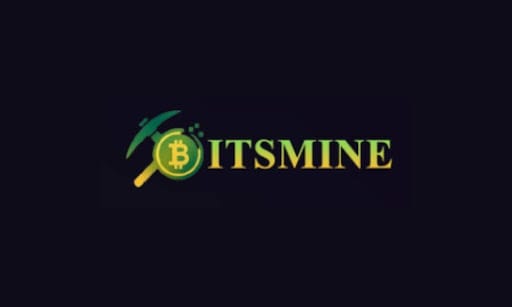Tether Adoption and Usage Statistics by Region and Demographics
Tether (USDT) has become one of the most widely used stablecoins in the cryptocurrency market. As a major stablecoin pegged to the US dollar, Tether aims to provide price stability amidst the volatility of the crypto market. Understanding Tether’s adoption and usage across different regions and demographics provides valuable insights into this stablecoin’s growing role and influence.
Tether’s Market Share of Stablecoins
As of September 2022, Tether accounts for nearly 70% of the total stablecoin market capitalization, making it by far the most dominant stablecoin. Tether’s market capitalization currently sits around $68 billion, while the second largest stablecoin, USD Coin (USDC), has a market cap around $15 billion.
Tether gained significant market share in 2021, going from approximately 50% stablecoin market share to nearly 70% currently. This growth indicates growing adoption of Tether across different crypto market participants. The demand for stablecoins that maintain a peg to the US dollar continues to accelerate, with Tether being a primary beneficiary as the first-mover and most recognized brand name.
Regional Adoption and Usage Patterns
When analyzing Tether adoption patterns, Asia emerges as a leading region. In particular, China has seen substantial Tether usage. Before the 2021 China crypto ban, over 75% of Bitcoin trading volume in yuan originated from Tether-enabled Chinese exchanges. Following the ban, Chinese investors continued accessing crypto markets via Tether, using stablecoins to preserve capital amidst regulatory uncertainty.
Currently, Tether transaction volumes remain high across major Asia exchanges and over-the-counter (OTC) trading desks. These allow Chinese investors to exchange yuan for USDT to circumvent strict capital controls. Data suggests volumes on these OTC desks can reach over $10 billion per month.
Outside of China, leading Asia exchanges like Huobi and OKEx facilitate high Tether transaction volumes. In 2021, Huobi alone saw over $1.2 trillion in USDT volume.
Tether also maintains a strong presence in Western markets. In the U.S., it is listed on prominent exchanges like Coinbase, Kraken, and Binance.US. High Tether trading volumes in Bitcoin and other crypto pairs demonstrate growing institutional adoption.
Leading European exchanges have integrated Tether as well, including Bitstamp, Bitfinex, and Binance’s Jersey arm. As crypto awareness increases across Europe, so too could Tether adoption on these regional exchanges.
Demographic Adoption Patterns
Analyzing Tether usage across demographic groups provides additional insights. Initially, retail crypto traders fueled Tether’s rise, using USDT to quickly move capital between exchanges and digital assets. This allowed traders to rapidly enter and exit positions without slower fiat withdrawals and deposits.
In recent years, Tether has expanded beyond just retail traders into institutional, corporate, and government usage. To service larger clients, Tether now offers custom bespoke transactions. In 2021, the largest single USDT transaction totaled $1.5 billion, highlighting rising institutional demand.
Here are some interesting demographic adoption patterns:
- Retail traders continue relying on Tether as an onramp and trading pair across exchanges worldwide. USDT remains one of the most widely available trading pairs.
- OTC desks and market makers use Tether for liquidity and fulfill large client orders in fast, secure transactions.
- Protocols and dApps integrate Tether to offer stablecoin exposure to their users. Decentralized exchanges like Uniswap have USDT as a top trading pair.
- Institutions and funds want stablecoin exposure, both for trading and rebalancing portfolios. Tether provides a liquid on-ramp into crypto markets.
- Merchants and e-commerce can leverage Tether to accept crypto payments and value storage. Its stability makes it appealing over volatile coins.
- Governments are starting to use USDT to buy Bitcoin as reserve assets and experiment with digital currencies.
This range of use cases demonstrates Tether’s versatility as a stablecoin catering to diverse needs. As the most mature and battle-tested option, Tether is likely to maintain dominance as stablecoin adoption increases.
The Future of Tether
How might we see Tether's adoption and usage evolve in the coming years?
Looking ahead, Tether will likely continue as the dominant stablecoin but face increasing competition. Here are some potential adoption and usage trends:
- Enterprise adoption accelerating as more corporations and institutional investors embrace stablecoins. Tether will aim to serve this segment.
- Decentralized finance driving demand as DeFi protocols integrate stablecoins into lending, trading, and payments.
- Geographic expansion into emerging markets and developing economies where stablecoins fill fiat currency gaps.
- Use in commerce/payments as Tether provides optionality for merchants and e-commerce platforms.
- Competitor growth as alternatives like USD Coin gain market share among institutions seeking regulated stablecoins.
Despite challenges, Tether enjoys strong brand recognition, liquidity, and first-mover advantage. Tether's dominance should persist near-term but the stablecoin market will likely fragment over time. Tether will remain a core piece of the crypto ecosystem.
Can Tether Maintain Its Peg to the U.S. Dollar?
What risks does Tether face with regards to maintaining its 1:1 peg to the dollar?
Tether has maintained its peg since launch but skepticism remains over its long-term sustainability. Here are the key risks:
- Reserves and attestations - Tether purports to hold sufficient USD reserves to back all USDT 1:1. However, some analysts doubt the quality of these attestations. Proper audits remain lacking.
- Regulatory action - Global regulators are wary of stablecoins. Regulatory crackdowns could impact Tether's operations and reserves management.
- Loss of trust - If market confidence in Tether’s redeemability declines, it risks losing its peg and could face bank-run scenarios.
- Cryptocurrency volatility - If crypto asset values drop sharply, Tether’s reserve holdings may become insufficient to maintain the peg.
- ** Transition to Tether 2.0** - Tether plans to evolve to a new blockchain.Technical or adoption risks during this transition could destabilize the peg.
Tether’s dominance shows it has earned market trust so far. But prudent users should stay cautious and monitor developments closely. While past performance is no guarantee of future results, Tether has overcome doubts before. With care and maturity, Tether may continue as a stable cornerstone of the crypto markets.
Conclusion
In summary, Tether has achieved widespread adoption across regions and demographics, cementing its place as the leading stablecoin. Asia drives much of its usage, especially China. But Western institutions and corporations are increasingly integrating Tether as well. Its long-term outlook remains positive yet competitive as alternatives like USDC emerge. Tether faces challenges in maintaining its dollar peg long-term but has so far succeeded. By understanding Tether’s adoption dynamics, we gain better perspective on the evolution of stablecoins and their growing impact.




